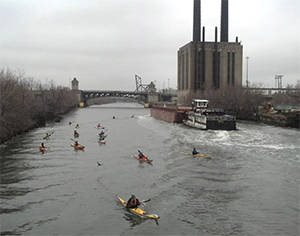The increase in dangerous incidents between recreational and commercial vessels on U.S. waterways has resulted in new safety recommendations by the National Transportation Safety Board (NTSB) based on an investigation into the scope of the problem.
The agency’s findings are published in “Shared Waterways: Safety of Recreational and Commercial Vessels in the Marine Transportation System,” which was released to the public in February. The report includes recommendations for the U.S. Coast Guard, National Association of State Boating Law Administrators (NASBLA), and National Water Safety Congress (NWSC).
The NTSB investigation included an analysis of past, present and future risks of encounters, taking into consideration emerging waterborne commercial enterprises, expanding recreational boating segments, developing infrastructure such as port facilities and marinas, and ongoing changes in the size and number of watercraft. The results of the analysis underscored the necessity for action.
The study found that pre-emptive measures by regional harbor safety committees and stakeholders such as distinguishing risks according to particular geographic areas, addressing waterway management practices, and requiring uniformly applied mandatory education for recreational boaters could serve to inhibit the otherwise “predictable” rise in dangerous incidents between recreational and commercial craft.
As for recommendations, the NTSB advised each of its target agencies — the Coast Guard, NASBLA and NWSC — to make a concerted effort to review and update “A Guide for Multiple Use Waterway Management” at regular intervals.
First published in 1996 by the NWSC and last published in 2004, the guide serves as a planning and management tool for agencies and organizations responsible for overseeing U.S. waterways. It includes processes by which waterway management partners and stakeholders can successfully tackle issues affecting both parties.
The NTSB proposed that a collaborative reform of the widely used text would prove indispensable. “Once strategies to mitigate risks have been developed, they need to be shared between the stakeholders both within and between the ports and waterways,” the agency said.
The NTSB’s recommendations also highlighted the need for mandatory recreational boater safety education. During the past 10 years, the Coast Guard has repeatedly tried to secure congressional authority to require such education but without success. Still, the NTSB prompted the service “to renew its efforts to seek legislative authority to require recreational boaters on waters subject to the jurisdiction of the United States to obtain education that meets National Association of State Boating Law Administrators or equivalent standards.”
Short of a mandatory requirement, Coast Guard spokeswoman Amy Midgett said service officials urged recreational boaters to “stay well away from commercial vessels and avoid crossing channels and thoroughfares, especially in restricted visibility.” She emphasized that prudent vessel operators always employ “situational awareness and properly working navigational equipment . . . (which is) key in reducing the risks of collision between all vessel types.”

